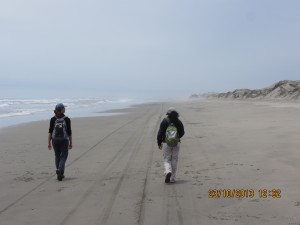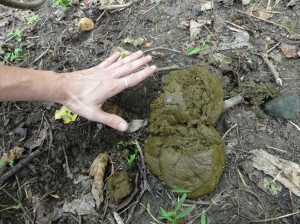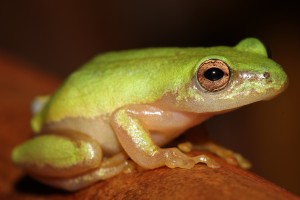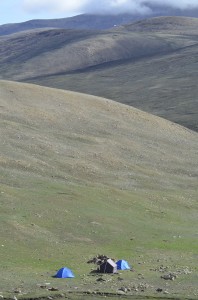Searching for endangered Peruvian tern (Sterna lorata) along the remote coast of northern Peru, Doris Rodriguez and her team are aiming to gather census data on a breeding population in northern Peru, as well as tracking the foraging of the breeding adults.
Month: February 2014
Photos that make us resent our desk jobs
Photos that make us appreciate our desk jobs
Emmanuel Schutz is surveying a remote island in the Philippines for Tamaraw (Bubalus mindorensis) a Critically Endangered species of wild cattle. Beside visual surveys, the team searches for other evidence along their transects. Jokes aside, the species is in critical need of continued protection, and Emmanuel is knee deep in the process.
Pickersgill’s reed frog biodiversity management plan published
Pickersgill’s reed frog biodiversity management plan published. Say that five times, fast!
A year ago Jeanne Tarrant received a $12,000 grant from the Fund for her work on Pickersgill’s reed frog (Hyperolius pickersgilli) near Durban South Africa. The frog is Critically Endangered with an estimated 2,000 individuals living in fragmented habitat on privately and commercially owned land. In a short year, Jeanne has accomplished a lot for the little pickersgill. Read the biodiversity management plan after the jump… Read more…
Lost frog in Kenya…still lost.
Petropedetes dutoiti is endemic to Mt. Elgon Kenya. However, the frog has not been seen in the wild since 1962. Ms Beryl Akoth Bwong (National Museums of Kenya) hopes to change that. Ms Bwong has completed her first efforts, and recently reported her results to the Fund. Read more after the jump…. Read more…
Snow leopard field survey in remotest Nepal
“The study area is the most remote area in Nepal with no road access and the flights irregular. It took us nearly two weeks to reach our field site. Everything had to be carried from Kathmandu. The effort to manage the logistics was very tiring and we had to devote our energy more in these arrangements rather than starting field work which was the first and foremost challenge,” Said Mr. Raju Acharya, Director of Friends of Nepal in Kathmandu.





